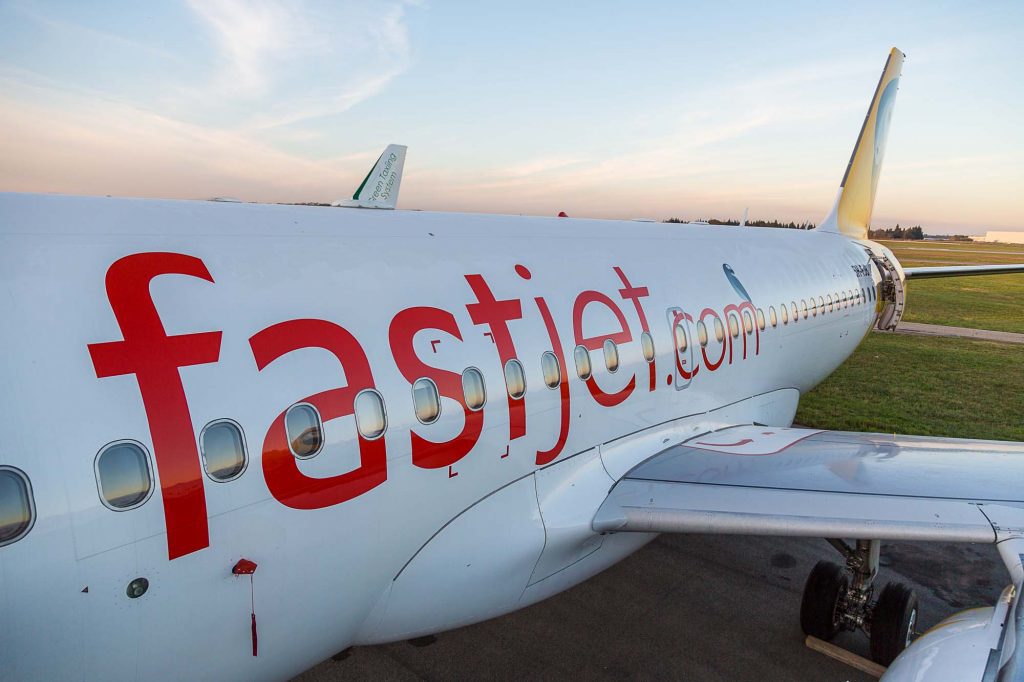Skift Take
It looks like the end is nigh for beleaguered Fastjet. Unless investors are willing to put up more cash for an airline that shows no sign of profitability six years after launching.
Fastjet is running out of cash – and quickly.
The African low-cost carrier, which has been beset with problems since launching in 2012, said it would stop flying at the end of October unless it secures additional funding.
In order to avert a collapse, Fastjet has started talks with its major shareholders regarding a potential equity fundraising.
“Whilst initial discussions with certain shareholders have been positive, discussions are ongoing and there can be no guarantee of a successful outcome,” the company said Wednesday in its half-year results announcement.
Aside from burning through its cash reserves, the company has other problems.
A more competitive operating environment in Tanzania has forced the company to re-evaluate its options in the country, which is its biggest revenue generator. This might involve ceasing operations entirely.
The company also lost non-executive director Peter Hyde, who resigned earlier this month.
Financial instability isn’t a new state of affairs for the airline. Nico Bezuidenhout came in as part of a management shake-up in June 2016, but has struggled to turn things around. Only three months ago the company tapped shareholders for $10 million – not really enough for a company that burned through $25.8 million in six months.
The company previously raised $19.8 million (£15 million) in July 2016, $28.8 million in January 2017, and $44.2 million in September 2017.
As of September 18, the company had cash reserves of $4.2 million but $2.8m of this is restricted cash held inside Zimbabwe.
“The remaining $1.4m is external hard currency within the group but this will not be sufficient to continue operating the business into Q4 2018,” the company said.
Whatever ambitions the company had of creating a pan-African low-cost carrier appear to be dying.
John Grant, partner at consultancy Midas Aviation, said the airline’s issues were down to a number of factors, some of which have been self-inflicted.
“Firstly the high cost of operating in Africa compared to Europe for example. The difficulty until very recently to secure bilaterals in an overly protective environment. An aircraft size that was initially too large for the market, subsequent changes may have occurred too late in the day,” he said.
“A market where forward booking activity is lower than many others resulting in cash flow challenges will not have helped. Challenges in stimulating new markets has I think also hampered development and of course over lay a management team that until recently was not even on the same continent as the airline!
“Africa is challenging, expensive and hard to make work for any airline other than those with hubs and a real understanding of the market. What has happened here is the application of a European model being applied to an African market without recognising some of the subtleties required.”
Half-Year Results
Revenue at the airline increased 42 percent to $30.1 million on the back of year-on-year capacity and flight increases for the six-month period to the end of June, 2018.
Group operating losses increased 13.4 percent to $14.7 million.
Load factors improved 10 percentage points to 75 percent and ticket revenue per passenger rose 23 percent to $85.96.
Many key metrics are trending the right way and the Bezuidenhout’s stabilization plan appears to be making a difference – the problem is Fastjet looks to have run out of time.
The Daily Newsletter
Our daily coverage of the global travel industry. Written by editors and analysts from across Skift’s brands.
Have a confidential tip for Skift? Get in touch
Tags: africa, airline innovation report, airlines, fastjet
Photo credit: A Fastjet aircraft. The airline is still burning through cash. Fastjet
